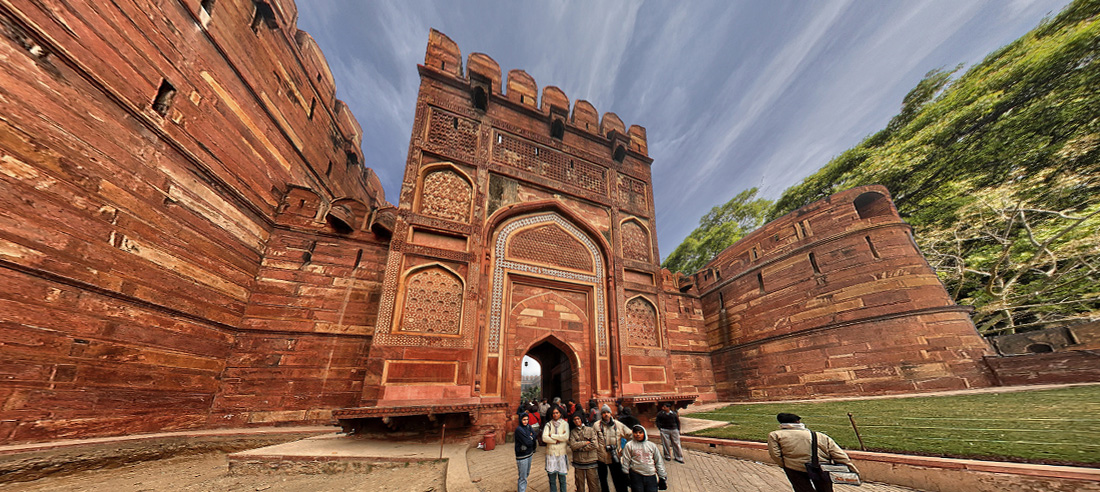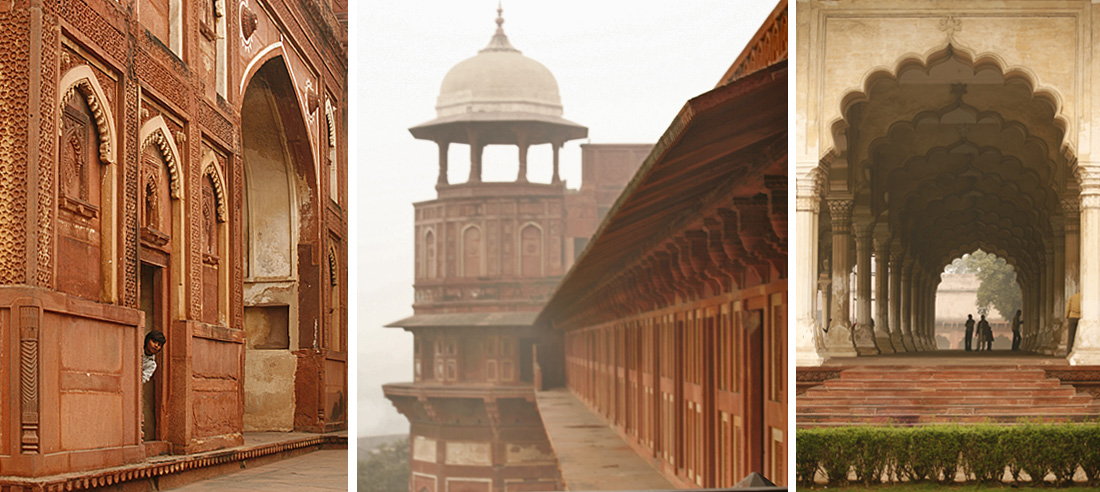Heritage
A UNESCO World Heritage site located in Agra, Uttar Pradesh, India. It is about 2.5 km northwest of its more famous sister monument, the Taj Mahal. The fort can be more accurately described as a walled city. The present-day structure was built by the Mughals, though a fort had stood there since at least the 11th century. Agra Fort was originally a brick fort, held by the Hindu Sikarwar Rajputs.
Information board describing the history of Shahjahani Mahal, inside of Agra Fort, Agra, India. It says: “It is situated in between the white marble KHAS-MAHAL and the red stone Jehangiri-Mahal and is set, transitionally, in between these two major residential complexes, of two different ages. It is the earliest attempt of the Mughal King Shah Jehan to convert an existing red stone building in accordance with his taste, and it is his earliest palace in Agra Fort. It has a large hall and side rooms, and an octagonal tower on the river side. The skelatal construction of brick masonry and red stone was all white stuccoed with a thick plaster, and colourfully painted in floral designs. The whole palace once glistened white, like white marble. On its face towards the KHAS-MAHAL is a large spacious white marble Dalan, composed of five 9-cusped arches supported on double pillars and protected externally by a Chhajja. Its western bay is closed to house the Ghaznin Gate. Babur’s Baoli and well are situated beneath it. The subterranean apartments in several storeys and Phansighar are also situated under this palace.”
Source
Amar Singh Gate
Second gate: The Delhi Gate is the grandest of the four gates. It was built as the king’s formal gate.
Guarding the mighty 94 acre Agra Fort are two gates, namely the Delhi Gate and the Lahore Gate. This is the Lahore Gate and is famously known as the “Amar Singh Gate”, named after Amar Singh Rathore. He was a Rajput nobleman of Marwar and is a courtier of Shah Jahan, the famous Mughal emperor who built the Taj Mahal
Akbar Darwaza
It is named so because Akbar, the Mughal emperor, used to enter the fort through this gate. The gate, with two octagonal towers crowned by a chatri, symbolizes the rich history of the Mughal era.
Jahangir Mahal
Designs inside Jahangiri Mahal: The interior of the Jahangiri Mahal reflects a blend of architecture of Central Asian and Hindu styles. Ornamentation and spatial organization is a special feature of the palace design.
Akbar Mahal
Akbar Mahal, situated in between the Bengali Burj and the Jahangir Mahal is a royal residential complex containing spacious chambers. Built in Circa 1565, it is equipped with courtyard surrounded with suites and chambers. One can see the magnificient Taj Mahal from the western arches of this Palace.


